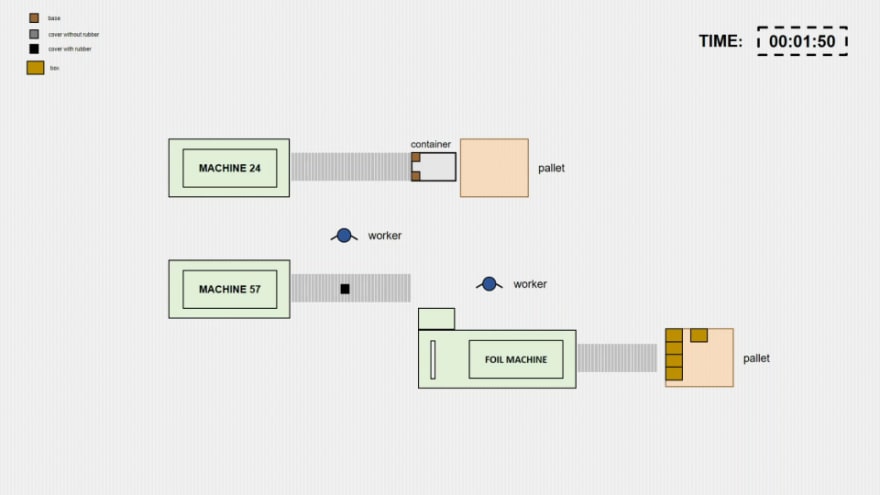In simulation engineering for production and supply chain planning I encounter many commercial simulation tools and commercial software licenses. But, as I have pointed out frequently, supply chain analysts and operationan excellence managers must not rely on commercial tools. This is especially true for smaller project scopes and simple animation requirements.
Exemplary assembly simulation tool
Below is a screenshot from a assembly line simulation and animation that I implemented in Python using SimPy and Tkinter.
The upper manufacturing line operates at a higher throughput rate and shorter cycle time, operating nearly at twice the speed of the lower assembly line with integrated part manufacturing.
Machine 24 produces parts that are then inspected in-line. Parts are then automatically collected in a container that, once full, is stored on a pallet. The pallet acts as a buffer since part manufacturing on machine 24 operates at a (significantly) shorter cycle time than part manufacturing on machine 57.
Machine 57 produces base parts onto which parts produced by machine 24 are assembled. Some other smaller parts are assembled onto the base parts first, happening in line and without delaying the cycle time of machine 57. Parts used for assembly, manufactured at machine 24 are then assembled onto the base part. The assembly is then placed into the foil machine where it is foiled and subsequently packaged into boxes. These boxes are then stacked onto pallets and eventually shipped to the customer. When the buffer pallet at the end of machine line 24 is full, machine 24 is shut down and the parts buffered onto the pallet are now used for the assembly operation on the lower assembly line.
Technology stack used for assembly line simulation
The assembly line simulator is a Python tool and developed as a Python framework that consumes existing Python frameworks for discrete-event simulation and animation. Most importantly, the framework developed consumes Tkinter and SimPy in Python. SQLite and MySQL databases can be integrated into the tool if desired by the user. For most applications this is however not necessary.
You can learn more about this tool by reading the following publication: SCDA assembly line simulation tool
Related content
If you are interested in using free tools in Python and R for discrete-event simulation modeling you might want to check out my poultry supply chain simulation example: End-to-end poultry supply chain simulation







Top comments (0)